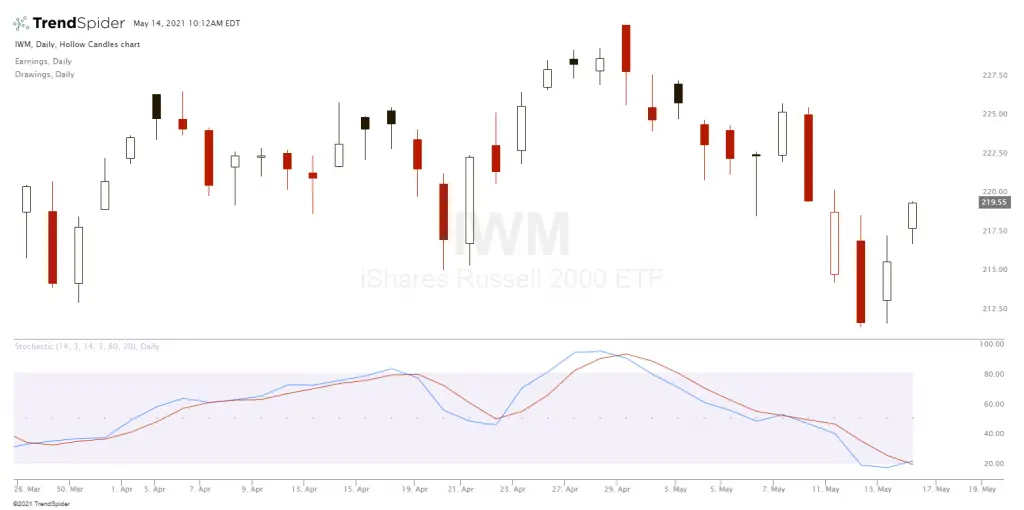The Stochastic Oscillator is a momentum indicator that measures the location of the closing price on a chart in relation to the high to low trading range over a period of time. This indicator was created by George C. Lane in the late 1950s. The Stochastic Oscillator isn’t following the trend in price or volume, what is quantifies is the speed and momentum of price action itself on the chart.
On most charts, the momentum of price movement changes before its directional move. Bullish or bearish divergences in the Stochastic Oscillator can be used as a signal to trade a high probability that a reversal in price action is near. Divergences are the common signal used with the Stochastic Oscillator.
The Stochastic Oscillator should always be moving in correlation with price action and both be setting highs or lows at the same time depending on the trend direction. Bearish divergences happen when a new high price happens but the Stochastic Oscillator doesn’t set a new high at the same time. A bullish divergence happens when price makes a new lower low with the Stochastic Oscillator forms a higher low. This loss of correlation can show either trend could be losing momentum in its current direction and be near reversing in the opposite direction. After a divergence is signaled, a trader should look for a confluence of other indicators to confirm the reversal like candlesticks or rejections near key moving averages.
When the Stochastic Oscillator breaks above the 50 centerline it is considered bullish for upside momentum. Breaks below the 50 centerline can be bearish showing downside momentum in price action.
The Stochastic Oscillator is a range-bound technical indicator so it can be used for quantifying overbought and oversold levels in price action after a trend goes too far and too fast in one direction with no pullback. This oscillator has a reading range from a low of zero to a maximum high of one hundred. Regardless of the speed a price moves higher or lower, the Stochastic Oscillator will stay in this set range.
The most common use of the Stochastic Oscillator uses it to read 80 as overbought and 20 as oversold on a chart. These levels can be set based on the needs of any specific chart based on historical behavior. A reading over 80 for the 20-day period of the Stochastic Oscillator would show that the stock was trading near the top of its own 20-day high-low range. A reading below 20 would show a stock is trading at the low level of its 20-day high-low range.
The Stochastic Oscillator is above 50 when the closing price is in the upper half of the trading range and it is below 50 when the closing price is in the lower half of the trading range. Low readings of below 20 signal that price could be near the low on the chart for the time period. High readings of above 80 signal that price could be near the high for the time period. Charts tend to stay within the 20/80 readings during range bound markets but break above or below during strong trends.
There is both a fast and slow Stochastic Oscillator whether either can be used based on the trader’s needs for the speed of entries and exits based on their chosen time frame.
